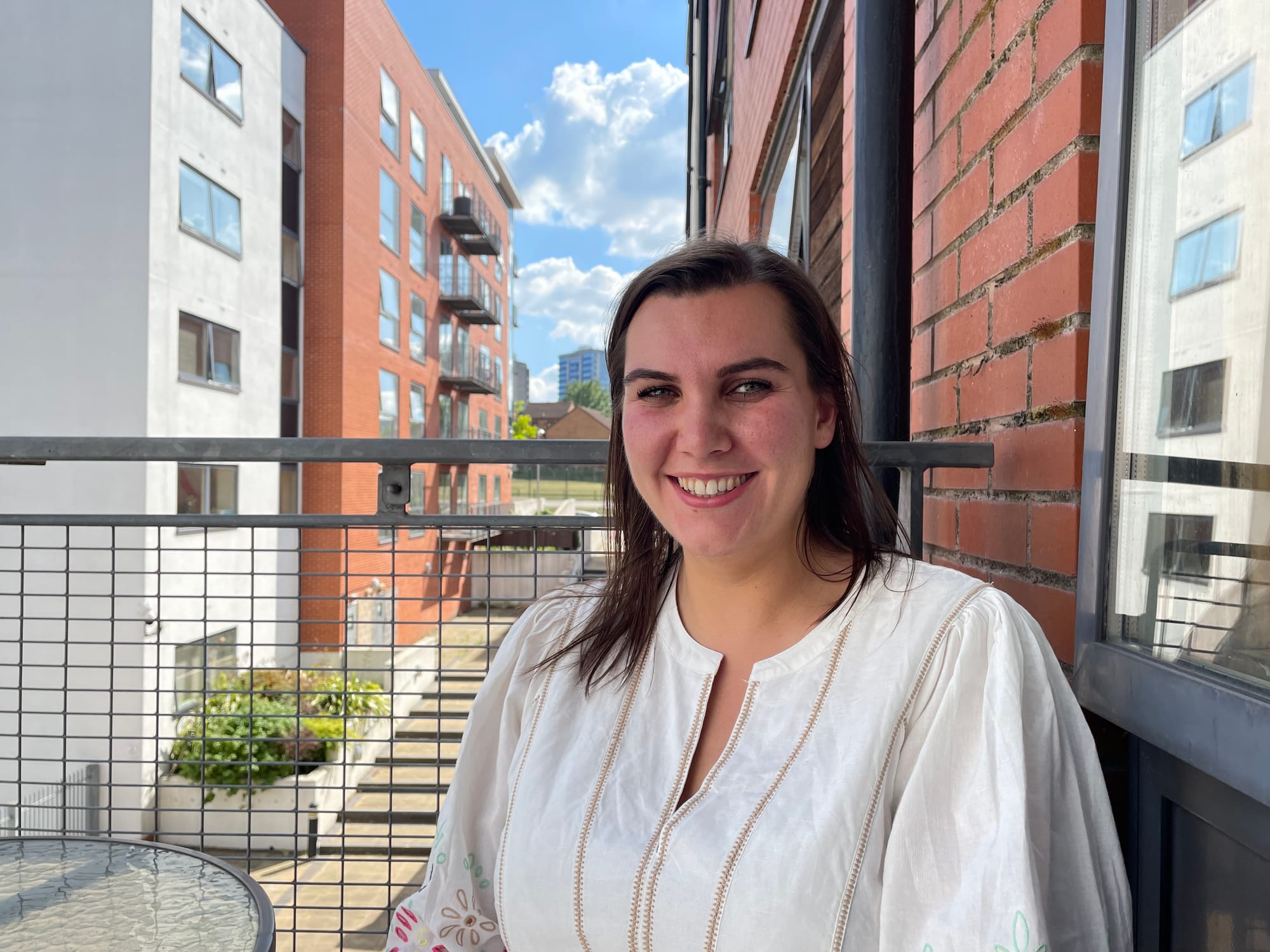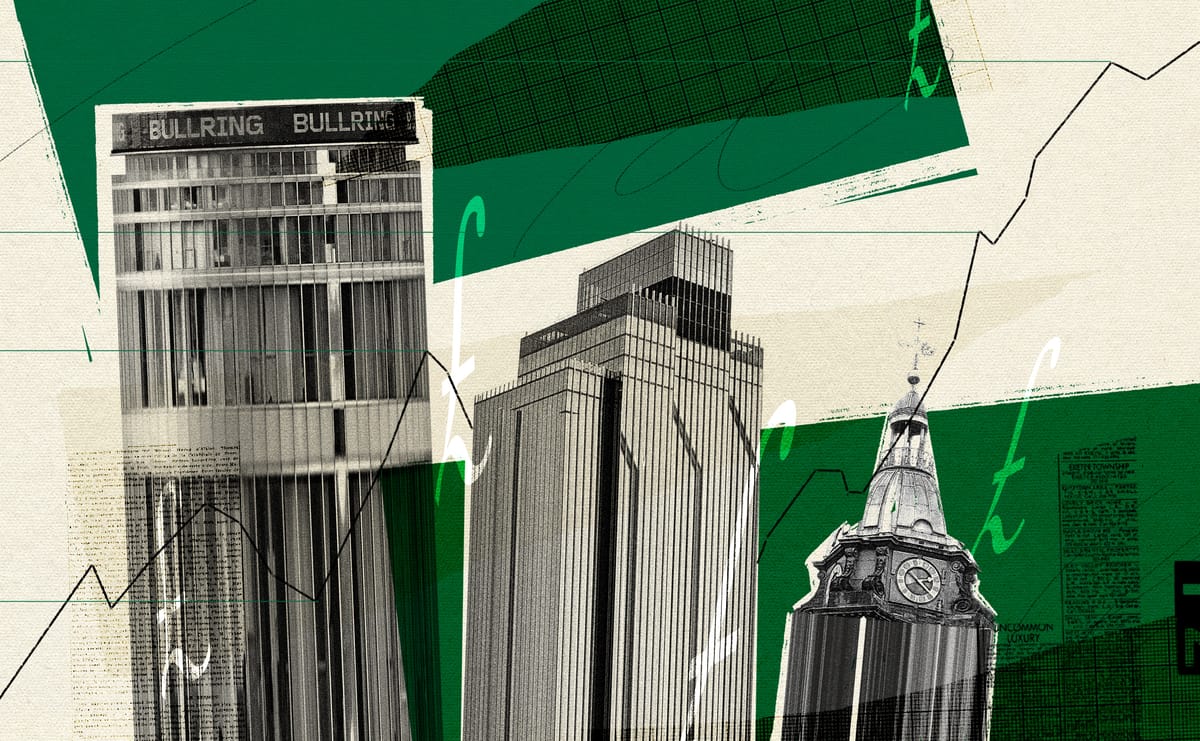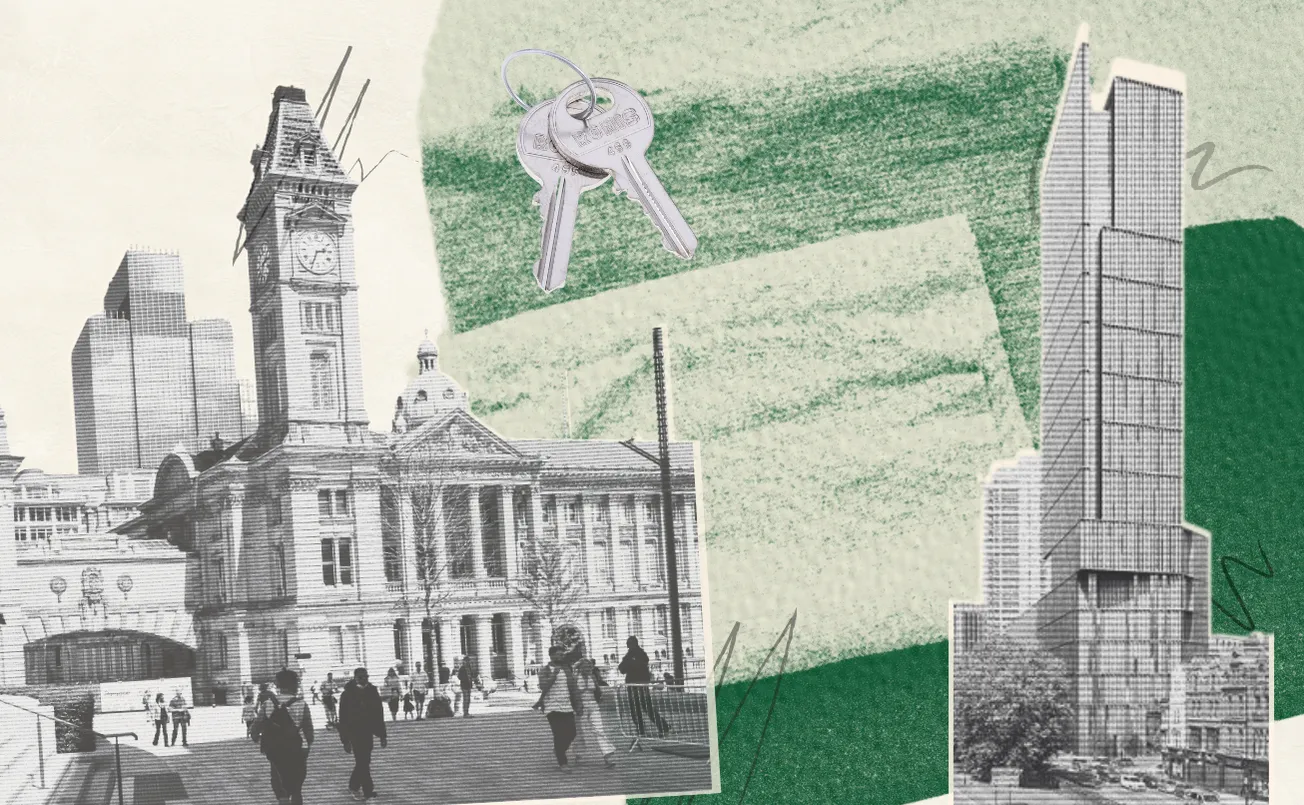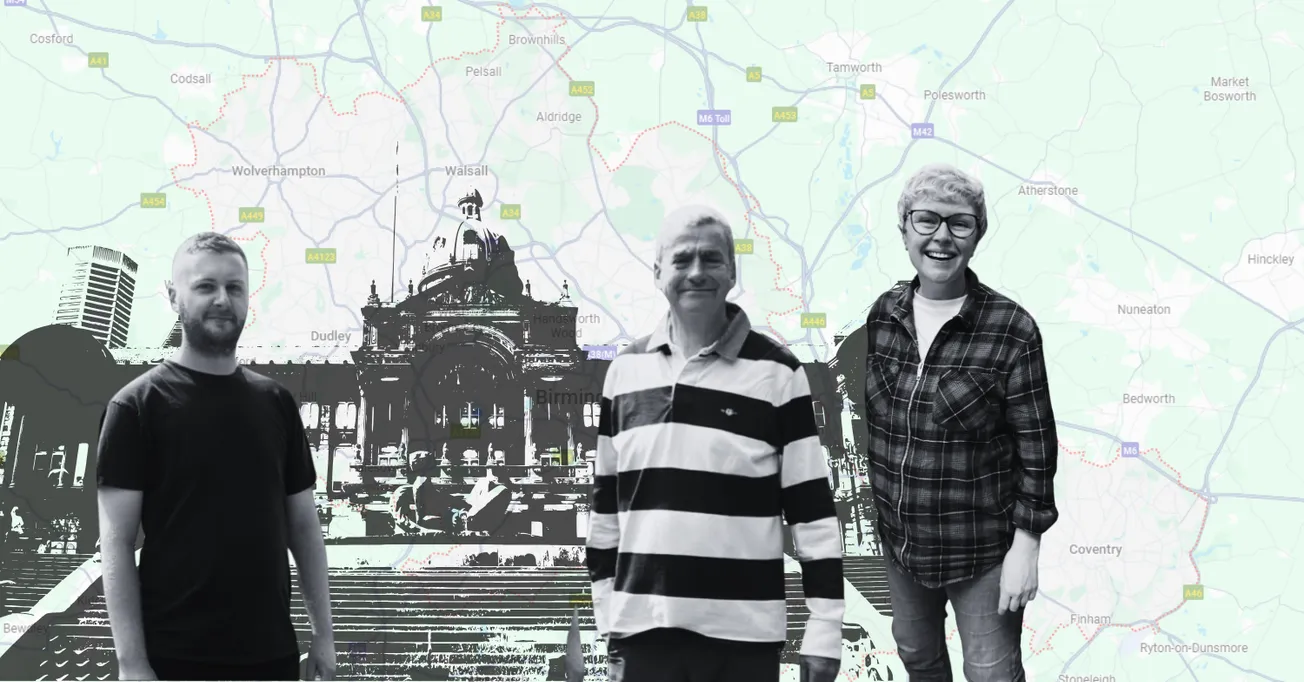Over the last few years, it seems like Birmingham city centre has become home to countless fancy towers that soar into the sky. You know the ones: glass skyscrapers (like the Mercian) or repurposed warehouses and hip-looking mid-rises in desirable central districts like Digbeth, Ladywood, and the Chinese and Jewellery Quarters.
But who actually lives in the city centre, an area most Brummies call ‘town’? It’s a question a Dispatch reader recently asked us. In the back of my mind, I had a pretty defined image of the sort of person who might reside in such a dwelling. Young white-collar professionals, renting in the city and living lives defined by gym classes, Zoom calls. Their wardrobes are filled with Charles Tyrwhitt starched collars or on-trend business casual co-ords and they spend a lot of time in the city’s lauded restaurants and bars, sometimes on dates, until they find a suitable match and move to their suburban forever homes.
My old man, a delivery driver who regularly takes shopping to city centre apartments, is more nuanced in his view, giving me his back-of-a-fag-packet anthropologist's take. “There are large Asian student communities, those who seem lonely and like they don’t leave their flats, and people who complain about their oat milk replacements,” he says. Hipsters, like his son, he means. Barb at me aside, I’m intrigued by his read. Is everyone in these glass towers alone? Or do some have a community? Family even? Do they intend to stay here forever? What are the reasons driving different people to live centrally? Are the flats as nice as they look?
So I set out to answer these questions. The first obstacle, however, is entry. All of these newer developments require a fob, a code or a card for access. They’re high-rise gated communities; I’ll need an inside man or woman to get in. I text professional mates who might live there or know someone who does. Soon, I’m inundated with options and plump for, near enough, ground zero of 1990s city centre redevelopment; an area between Broad Street, Brindley Place and Ladywood. A place where well-heeled apartments are still springing up.
A twenty-something media world friend lets me into her block, opposite the Manhattan-style lofts near Sherbourne Wharf. She gives me her rundown. The location is brilliant for transport. But payday weekend partying creates noise, as does the constant construction on similar flats. Town, she feels, is also past its best. Life here can be alienating, too. From her high-up balcony, an oasis of cool on a hot day, she points to a corner between two apartment blocks where addicts often shoot up. On the day she moved in, one drug user offered to sell her a shoplifted steak. “But it's the city centre, isn’t it? It’s give and take,” she says.
Her sole flatmate, Enya, a 30-year-old civil servant, has been in Birmingham since 2017, moving for work and a past relationship. We speak between her work-from-home video calls. The area can be pricey, she admits, but she likes the ability to walk to her office and proximity to the gym. She’s dating in the city, too. “For the next couple of years, I’m happy here,” she says. But she travels to the outer West Midlands to access green space and feels she can only find community in pockets, unlike when she lived in Harborne. “To start a family, I’d move to the suburbs,” she adds.

Community hardly feels accessible as I start to walk the windowless corridors of Enya’s apartment block to find other residents to speak to. It’s just me and closed doors, despite the welcome mats. But just moments ago, we were yelling down to a dad and daughter using a concrete square, between the high rises, as a makeshift tennis court. “She’s Serena Williams,” we shout to the ground, applauding as she hits the ball. “I hope she can retire me,” he laughs back.
Enjoying this edition? You can get two totally free issues of The Dispatch — including our Monday news briefings and the weekend read you're perusing right now — every week by signing up to our regular mailing list. Just click the button below. No cost. Just old school local journalism.
Back inside, there’s no such bonhomie. I knock on door after door after door. Most don’t answer. One woman, almost middle-aged, with a smart haircut and rectangular glasses, does answer my knock. “I’m sorry,” she whispers in a managerial fashion. The door is open barely a couple of inches. “I’m in a meeting.” The crack snaps shut. I’m alone again in the endless half-light of the corridor.
Eventually, I do get a warm invite inside, from a married Indian couple, Sadiya and software engineer Mohammed. They live in a sparse, open-plan flat. A brown, pleather sofa acts as the centrepiece. It's hardly top-shelf living, despite paying £1100 a month for the one-bedroom they’ve rented for three years. They ended up here for work but enjoy the closeness to restaurants and canalside walks. “We almost moved away,” Mohammed laughs. “But we have friends here and we’d come back anyway.”
Vivek, a friendly-faced Indian software engineer, lives on the same floor. “Come in, come in,” he says, smiling, opening a front door adorned with symbolic Hindu bunting. “We have ten minutes between my meetings.” Another identikit open-plan flat greets me, accented by cooking equipment, the sweet smell of garam, and multiple laptops cluttering sofas.
“I moved here for a job, then it got extended… and then seven years,” Vivek says. “Now my daughter is in school, and I don’t want to disrupt that.” I think it’s a lot to have three people in such a small space but Vivek doesn’t seem to mind. What’s more he likes the convenience town-living affords, not least proximity to favourite restaurant Asha’s. But the clutter and dirt of the city centre gets to him. “We’ll move back to India eventually,” he adds.
Ben, a 29-year-old Brummie who works as a Nationwide programmer, isn’t toying with moving. I meet him in a coffee shop after he got in contact online to help with research. He lives on the edge of the Jewellery Quarter, in a handsome Victorian-era building converted into high-ceiling, large windowed flats. “Lovely in summer but expensive to heat in winter,” he laughs.

The Jewellery Quarter is a desirable area, but Ben’s got below market rent and, as such, enjoys the benefits of urban living. “I love it here, there are beautiful canals, galleries, the cemetery to walk in, a diversity of cuisines to try, a walk to work…there’s even a neighbour forum to be part of.” He says most of his neighbours are, like him, young professionals. “It's a friendly lot.” However, though Ben has no immediate plans to move, his social group is changing. “My friends who are buying are heading out to Longbridge, that’s the next step.”
Darren has moved in the opposite direction to Ben’s mates. He currently lives in a bachelor’s flat a stone’s throw from Brindley Place. “I’m only here as I got evicted from the last place,” he jokes. But last year his business, in his words, “went bump”. His mate offered him the flat we’re chatting in as Darren rented out his more expensive Kings Heath house. Life, he says, is being figured out.
He’s an energy broker by trade — “it ain’t the glamour of the cocaine business,” he laughs — and cites Fumo, San Carlo and Albert Schloss as the places he likes to go out with his girlfriend. “She likes the cocktails,” he says. “But it takes a toll on the wallet.” He adds that his friends are put off from visiting him centrally by the clean air zone charge.
Prices and transience are two regular topics across my conversations. I don’t meet a single apartment owner. Rent falls into two broad categories: a social connection has afforded a lower rate, or it’s admittedly pricey. Living in the brand new Chinese Quarter development, Unity and Armouries, is another friend, Liam*. He’s a thirty-something who works in media, and he’s happy to talk money.
He pays over £1000 a month for a cramped, one-bedroom space. “Not worth it,” he says. In a different way to Darren, life circumstances have forced him into a stopgap housing situation. The short-term rental contracts on offer in the centre were appealing. Liam spent a while looking for a place and describes many of the apartment blocks' selling points as gimmicks from rooms to play virtual golf in or access to free coffee for residents.
Many blocks are “bang average” once inside, he says. Property managers try and sell perks. “Looking at the A34…that isn’t a fucking perk,” he laughs, adding rarely a day goes by without an outside incident from the addicts who gather below.
With a plush co-working space inside, Unity seems to be set up for young professionals of the digital employment landscape many of us contend with. But as I traipse through corridors, I get no responses to my knocks. There’s no youthful buzz. I decide to sit in the advertised co-working space, where multiple residents sit alone and apart, scrolling phones. The only extended chat I have is with Ali, an Egyptian IT worker, who's staying here for a couple of days with his brother before moving to a corporate job in London. He’s the friendliest stranger I meet here, I lament.
Phone-scrolling, atomised or otherwise, Brummies have always lived in the centre. An impoverished working class lived there before Joseph Chamberlain’s 1870s upheaval. Over 100 years later, redevelopment in Brindley Place saw one of the first central apartment blocks soar upwards, seeking to pull professionals in. This was a forerunner to today’s ongoing development which is now one of Birmingham’s most densely lived-in areas. Further homes are planned. More than 3000 are intended for the Smithfield site alone.
As towering apartment blocks keep being erected, town might be the future for many of us — at least that’s what the West Midlands Combined Authority is likely hoping; a busy city centre accompanies booms in high-value professional service sector jobs. These are what have driven lots of Manchester’s economic growth.

Enya, dating a property manager, seems switched on to how to make the area more of a home. “The offices being converted to apartments are now mixed use,” she says, adding it's coffee shops or even good outdoor space that makes areas more appealing. For one, such ideas might provide vital third spaces that keep people here.
For now, my dad might’ve been onto something with his read of city centre loneliness. My friend near Brindley Place says she wishes her building had a group WhatsApp chat. Darren leaves the centre to see his mates, so does Liam. But why build community if, as many admit to me, it's all temporary anyway? Whether that’s because of price, plans for longer-term housing stability, work, relationship status or the buffeting winds of life. Even Vivek, who has lived in the centre for nearly a decade, is eyeing an out. I don’t think even another neighbourhood coffee shop would change his mind.
*Name changed to protect identity.









Comments